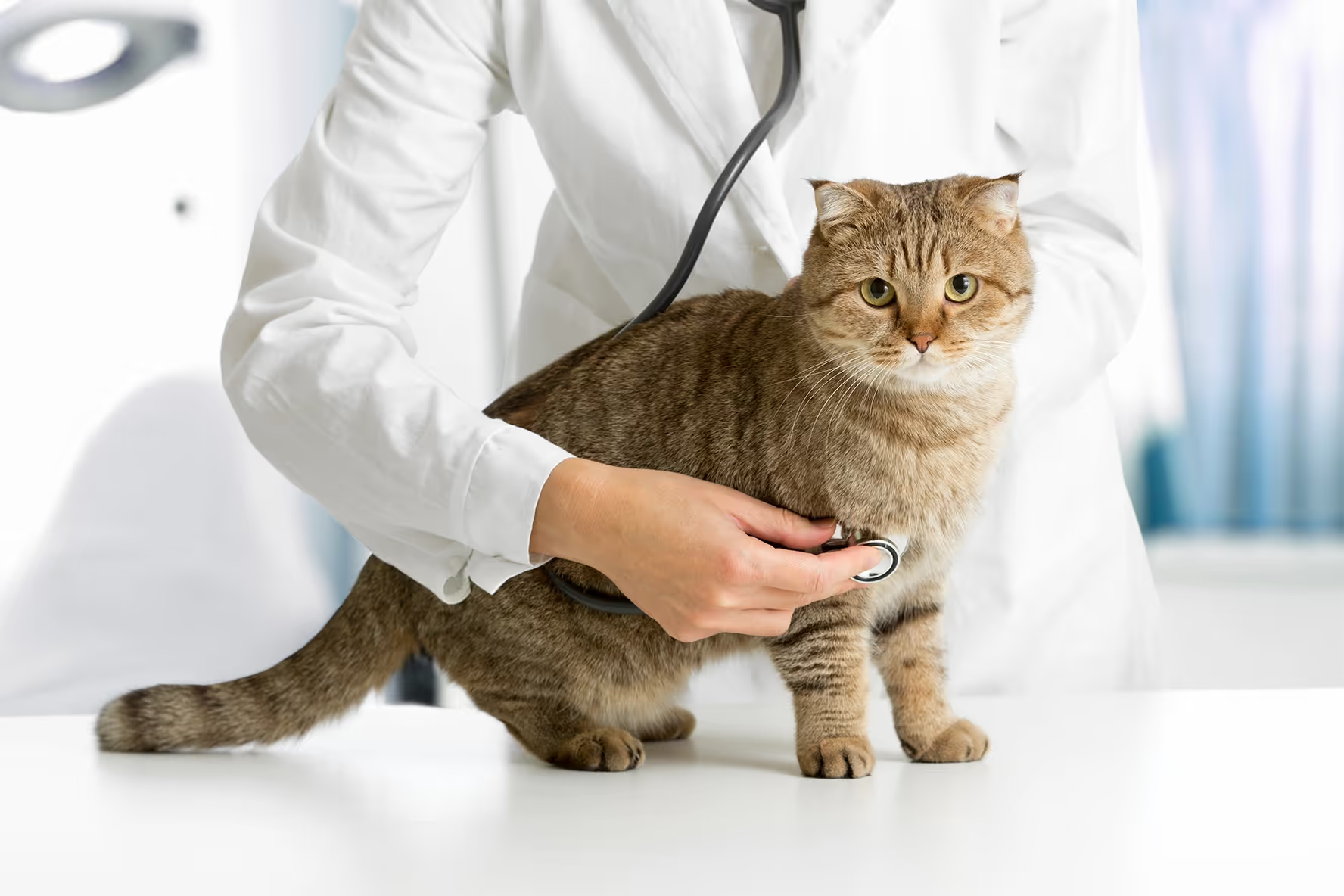Cat Cancer Care: A Step-by-Step Guide to Your Cat’s First Oncologist Visit

Finding yourself on the way to a veterinary oncology clinic with your cat is rarely part of the life you imagined when you first brought them home. It can feel like the ground has shifted beneath you the moment that a cancer diagnosis enters the conversation. Suddenly, your trusted family vet’s familiar office gives way to an unfamiliar space filled with new faces, new terms, and new decisions.
For many cat parents, the first visit to an oncologist comes with an avalanche of emotions—fear, confusion, even guilt—and it’s no wonder why. There’s paperwork to gather, medical histories to share, and the sobering reality that you’re stepping into a chapter you never wanted to write.
But this appointment isn’t just about what’s behind you; it’s about what’s still possible ahead. While the path may feel uncertain now, it’s also an opportunity to gather the tools, knowledge, and support you’ll need to give your cat the best quality of life moving forward. By the time you finish this article, you’ll have a clearer sense of how to prepare, what to expect, and how to face this next stage with steadier footing, even if the waters still feel a little rough.
What to Prepare for Your First Veterinary Oncology Appointment
Walking into your cat’s first oncology appointment can feel overwhelming, but a little preparation can make a big difference in easing the stress. The more information you can bring with you—organized and comprehensive—the smoother the visit will go for both you and your feline friend.
Start by collecting any relevant medical records This could include previous test results, full veterinary histories, list of medications, and notes about past health concerns, even those unrelated to the current diagnosis. A small lump from years ago, a respiratory illness, or an unusual lab result might seem insignificant to you but could help your oncologist see the bigger picture. You can ask your primary veterinarian to print these records or email them to you directly so you can have these on hand. Even if your vet referred you to your new oncologist, and likely already sent over your cat’s history, having them on hand for your reference while discussing your cat’s new diagnosis can still be helpful.
It’s also a good idea to prepare a written list of your cat’s symptoms and when they started. Include any details you’ve noticed about changes in appetite, grooming habits, litter box use, and personality. Cats often communicate discomfort in subtle ways, and your observations may provide valuable clues.
Having a list of any of your cat’s current medications, supplements and even the food brand and type you feed can also help your new oncologist. If your cat has skin-related issues or a cutaneous cancer, jot down any topical products you’ve used, such as shampoos, wipes, sprays, or lotions; these aren’t as common for cats as they are for dogs as cats are able to bathe themselves, but any additional information can be given to your oncologist.
Having physical copies unless otherwise asked by your new oncologist can make it easier to find and reference what you’re looking for during the increased emotional weight of a cancer appointment. But if it would bring you more stress to have to navigate both the cat carrier and a folder of documents, take the time to organize anything that you might want to refer to in a virtual folder with easily labeled documents. Preparedness takes a lot of the anxious energy out of the room and lets you focus on being your cat’s health advocate.
Finally, don’t forget to write down any questions you want to ask. No question is too small, your oncologist is not only there to treat your cat but to guide and support you through the process as well.
What to Expect at Your Cat’s First Veterinary Oncology Appointment
Your cat’s first visit to an oncology clinic will likely follow a familiar pattern—similar to any other vet appointment—but with a few extra steps focused on cancer care. When you arrive, you’ll check in with the front desk staff and confirm which oncologist you’re seeing. They may ask you to fill out some forms or update/verify your cat’s information from what your normal vet’s office was able to send over. Once that’s done, you and your cat will either wait in the general waiting area or be escorted to an exam room. Any nerves you feel at this point are completely normal—it’s reasonable to feel a little bit of anxiety from the new experience of a cancer diagnosis.
The appointment typically begins with a veterinary technician checking in on your cat’s health history. They may review records from your primary vet, ask about recent symptoms, or other changes in your cat’s behavior. This is also the time to make sure this oncology office has all the necessary details about medications, diet, and past health concerns, which helps the oncologist provide the best care from the outset.
Soon afterwards the veterinary oncologist will join the appointment. They’ll perform a physical exam to assess your cat’s overall wellbeing and get a sense of how your cat responds to their handling and interaction. With cats, it's not uncommon for them to dislike interacting with new people, so knowing the right way to approach each individual feline patient helps immensely when there is a need for more regular vet visits. Some veterinary offices will remove the cat from the room that you’re in to complete the physical exam; with many pets this can be helpful because they don’t have the added stress of behaving well in front of their parent, or feeling that because they are scared, they have to protect their owner from the scary thing as well. Depending on the situation, they may recommend additional diagnostic testing such as bloodwork, imagining, or biopsies. Some tests may need a separate appointment, but the office will do its best to streamline the process for your cat. More details about your cat’s cancer, treatment options, and prognosis will be talked about to make sure you have more knowledge and multiple options.
Finally, your new veterinary oncologist will open up the conversation for you to ask any questions that you may have.
Questions to Ask Your Veterinary Oncologist at Your Cat’s First Appointment
It’s important to remember that no question is too small or too simple. Your veterinary oncologist has likely heard them all before. You are your cat’s health advocate, and every concern you bring to the appointment matters. Asking questions is a part of ensuring your cat receives the best possible care both from your new oncologist and also from you when you are supporting their care at home. Your oncologist expects and welcomes your involvement.
If you’re unsure, here are some questions to guide the conversation.
- What type of cancer does my cat have:
- Follow up questions:
- How might this affect their day to day health?
- How can I support them at home?
- Follow up questions:
- Will you need to perform additional tests beyond what my primary vet completed? What would that include and need from me and my cat?
- What treatment options are available for my cat?
- Can you provide an estimated timeline for treatment?
- Are there any changes I should make at home to support their treatment?
- What are potential side effects and overall prognosis?
- How can I help minimize side effects my cat might experience?
- How will treatment impact my cat’s quality of life?
- What are the estimated costs for the recommended treatments?
Some questions may be more specific depending on your cat’s diagnosis. For instance, if your cat has feline lymphoma, certain follow up questions can be particularly relevant. You can download our discussion guide for first time feline lymphoma oncology visits to have the tools at hand to ask some tailored questions for your cat's needs.
Emotional Prep: What to Expect as a Cat Parent at Your First Appointment
High stress situations often bring out sides of ourselves we don’t expect. Some cat parents stay remarkably calm, processing the news later, while others find it hard to gather their thoughts in the moment. Both reactions—as well as any others on that spectrum—are completely normal.
When your cat is diagnosed with cancer, it’s natural to feel overwhelmed, confused, or upset. Cats are a part of our families, and their wellbeing matters as much as our own. There’s no “wrong” way to feel—your emotions are valid and acknowledging them is part of navigating this journey.
That said, staying as calm as possible during your oncology appointment can help your cat feel safe and supported in an unfamiliar environment. Being prepared lets you focus on your cat and the conversation instead of mentally scrambling for information.
If possible, consider bringing a trusted friend or family member for support. They can take and review notes, ask questions you might not think of at the moment, and provide emotional backup if you feel overwhelmed. If a second person isn’t available, ask whether you can record the appointment. Many offices also offer written summaries after your appointment, to help you remember the details after the fact.
It can help to reflect on past experiences that carried a similar emotional weight and think about what support or resources would have been most useful in that instance. Preparing emotionally is just as important as preparing physically, it allows you to advocate for your cat with clarity and care.
Download ImpriMed’s discussion guide to feel the most prepared for your first oncology visit.
References:
- https://www.petmd.com/blogs/thedailyvet/drjintile/2015/september/your-pets-cancer-consult-and-exam-and-what-expect-33224
- https://bluepearlvet.com/what-should-i-expect-at-my-first-oncology-visit/
- https://petcureoncology.com/medical-oncology-for-dogs-and-cats/
- https://www.covetspec.com/2025/06/27/what-happens-during-an-oncology-consultation/


